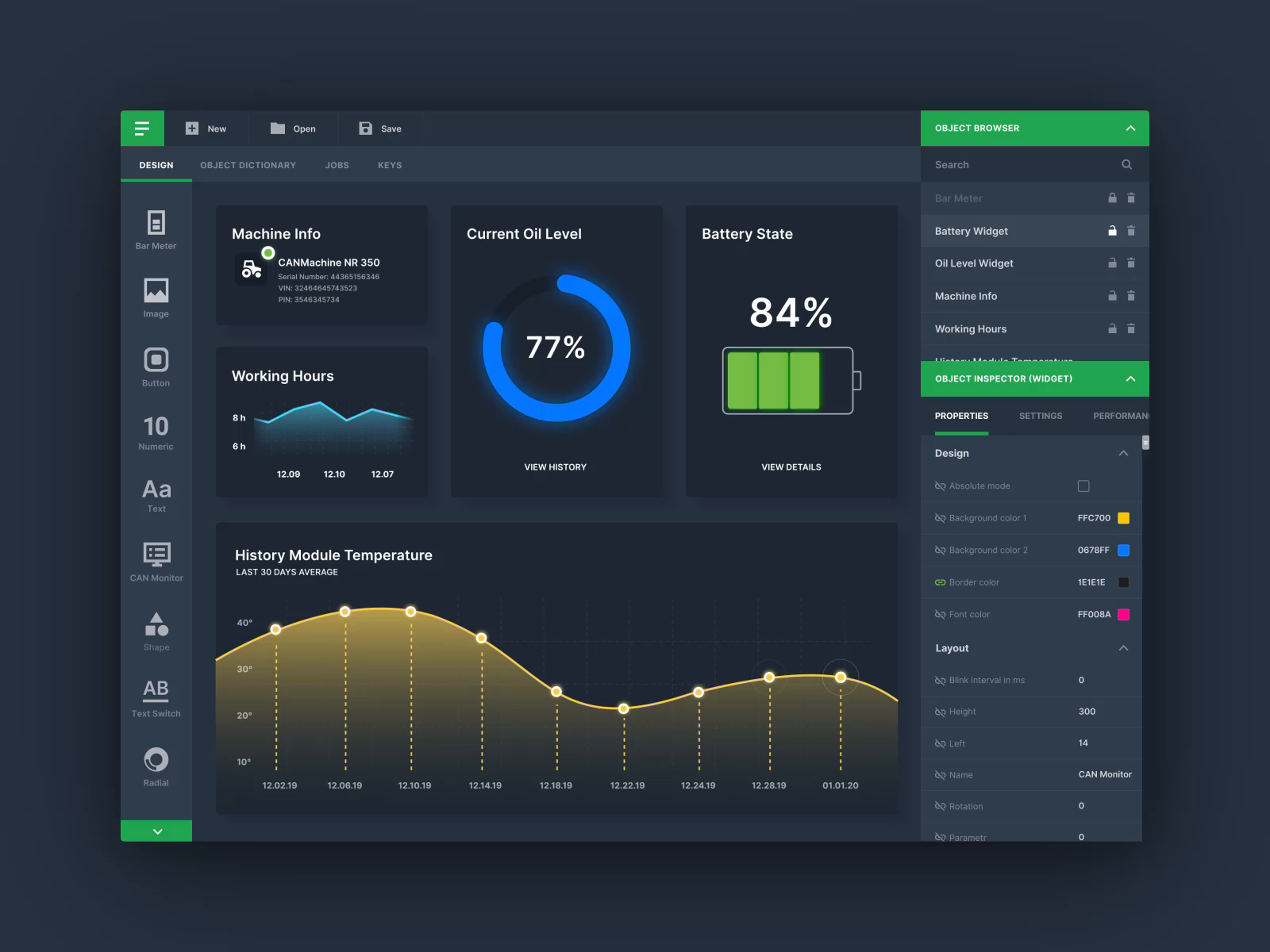Table Of Content

There are a number of best practices to follow when designing an app, and a lot of tools to assist mobile app designers. This article will share all the tools you need to know, along with some best practices of mobile app design. You can build your prototype and create apps for Apple and Android users alike, and test it on your phone completely free and only pay when you are ready to publish.
26 Interior Design Software Programs to Download in 2024 - Architectural Digest
26 Interior Design Software Programs to Download in 2024.
Posted: Mon, 29 Jan 2024 08:00:00 GMT [source]
Key considerations of app design software
Make sure you have a digital presence on as many marketing platforms as possible. Prioritize the channels where your user base spends the most time. Promote your app on social media channels, like Facebook, Instagram, Twitter, and LinkedIn. If you’re targeting a younger generation, you can even promote the app on Snapchat and TikTok. The best app building sites will assist with the deployment process. If you use BuildFire to create an app, we’ll get the app live for you.
iOS 18
More so, they have tons of plugins extensions to help make your job easier.
Google Fitbit app's design talks about their "form follows feeling" philosophy in new interview - PhoneArena
Google Fitbit app's design talks about their "form follows feeling" philosophy in new interview.
Posted: Sat, 13 Apr 2024 07:00:00 GMT [source]
Crafting Your Ideal Mobile App/Experience Starts Here!
Lastly, building a strong online presence and marketing your app is the key to getting momentum for your app. Making the app easy to use, cutting out the clutter, giving users control, making a strong first impression, and keeping it quick and snappy are all key. Designing a mobile app that appears fast and responsive is key to user satisfaction.
By listening to your potential users, you can uncover valuable insights that will shape the design of your app. For example, you may discover that your target audience values simplicity and ease of use, which will influence your design choices. Apps are increasingly incorporating data visualization and infographics to present complex information in a more digestible and engaging format. This trend is particularly prevalent in fitness, finance, and educational apps, where users benefit from visual representations of data and statistics. Learn how our tools can help you create stunning, unique designs effortlessly. In the digital age, where many of us jokingly refer to our smartphones as extensions of our arms, designing an app is akin to creating an advanced set of fingertips.

Integrating DevOps: Transforming the Testing Paradigm
With more devices, this new ecosystem will offer more choice to consumers and businesses around the world. App distribution is a necessary element of enterprise mobility and BYOD strategies. It's important to ensure that the latest versions of mobile apps are always available to in-office, hybrid and remote workers. Challenges occur with app distribution when an organization doesn't define a standard distribution channel, thus risking that not all users are running the latest app. Options for distributing enterprise mobile apps include ad hoc builds, TestFlight for beta testing, the Apple Developer Enterprise Program and Apple Business Manager.
Best Practices in Mobile App Design

Level up with interactive features such as plugins, flowcharts, diagrams, and stock images. Discover icons and visualize data to make an engaging app design. Allow developers to collaborate and co-edit app designs to capture accurate requirements and outline the structure. With this complete app UI kit, you’ll be able to design both music streaming apps as well as music file management apps. The concept UI kit consists of all the necessary screen designs, including ones for equalizers and identifying songs. The onboarding process takes a key role in helping users get familiar with an app.
Step #9 — Create an MVP
In today’s ever-evolving digital landscape, great app designs are of great importance. For more useful tools, check out this ultimate guide to the best UX and UI design tools. Once the app passes all the tests and you introduce the essential improvements, the application is ready for release.
You can do app mockups in many popular design tools (some of which we’ll discuss below), or even go so far as to build a functioning and interactive mockup in a no-code app builder. A wireframe includes details such as user interface elements, navigation structure, and content placement. The point is to map out the user journey and plan the app layout in as little effort and investment as possible.
You can submit your product to the application store of your choice and wait some time for the app to be reviewed by the app store’s team. Besides, do not forget about the security testing, which tests if the app is secure by implementing SQL injections, SSL validation, session hijacking, etc. At the same time, a wireframe gives you only a basic understanding of what your app will look like. In other words, creating prototypes helps you visualize the finished or close-to-finished design of your app yet without a single line of code. User flow mapping done in the previous stages will form the ground for creating a wireframe.
Ideal for a product catalog app, it’s customizable to fit your online catalog needs, available in light mode, and user-friendly in Figma. This kit’s organized layers, RGB colors, image gallery, and free font usage enhance your editing experience. When designing food delivery app user interfaces, the apps that give clear directions for users to follow with cleaner layouts are the ones that are most successful. This UI design template follows the same philosophy to create a visually attractive and modern design to provide a simpler food ordering and delivery service to its users. Alternatively, it’s extremely easy to make an app if you’re using a no-code platform like BuildFire. If you’re comfortable navigating the internet, you can build an app using this method.
Basic animations are subtle yet impactful visual elements that make for an enjoyable and seamless experience. Adaptive designs are ensuring that apps easily adapt to different devices, offering a consistent and awesome design across platforms. The rise of 3D design is introducing new levels of creativity and immersion to app interfaces.
So if you’re not a developer and you don’t know how to code, you’ll need to hire a specialized developer to create the app for you. This tool isn’t meant to be a one-to-one relationship of how the final app will actually look. Instead, the focus of your wireframe should be on structure and flow. If your app is an extension of your existing business, you can use your current customers as a resource for this research. If the app is for a completely new idea, you’ll need to connect with prospective users that fit your target audience.
Designers focus not only on branding aesthetics like colors and font types but also on usability and functionality. In the age of data-driven experiences, personalisation has emerged as a cornerstone of user-centric design. Users have come to expect apps to cater to their unique preferences, habits, and needs. An app that remembers a user’s preferences, offers content based on past behaviour, or even greets the user by name can make the experience feel all the more special. Whether it’s through AI-driven content recommendations, personalised user interfaces, or adaptive features, personalisation can significantly enhance user engagement and satisfaction.
It involves understanding user needs, conducting research, and creating mobile design systems that guide the decision process. A well-crafted UX design takes into account real user preferences, behaviors, and user inputs, leading to higher user satisfaction. Now it’s time to think about the actual design of your app and create good-looking, realistic mockups. This is a super important step because it’s what will leave a permanent impression on your users, so don’t rush or skimp when it comes to your app design. A great looking, professional, beautiful design is what can make your app a raging success. The app design process is a bit lengthy as it has countless things to take care of.
By attracting users, boosting engagement, and encouraging beneficial user interactions, investing in a distinctive design can help your app succeed. The design process is a critical phase that transforms your ideas and concepts into a tangible app design. By following a systematic approach, you can ensure the smooth execution of your design vision. Let’s explore the step-by-step process, integrating key practices such as wireframing, visual design, prototyping, user testing, and UI development. Market research involves studying the demographics, psychographics, and behavior patterns of your potential users. It helps you identify their age, gender, location, interests, and preferences.

No comments:
Post a Comment